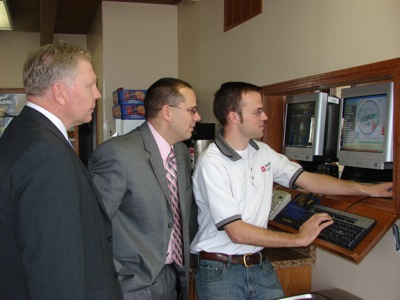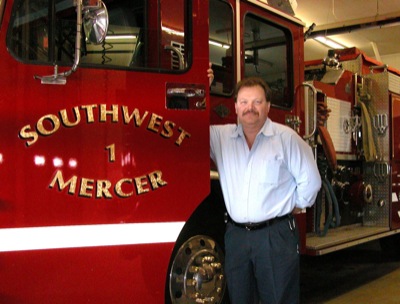Friday, February 22nd, 2008
Grand Lake dredging hearing anticlimactic
Sierra Club official who requested forum is a no show
By Nancy Allen
Four people spoke out for and none against a state project to use dredge material to build a 23.5-acre wetland along the shore of Grand Lake during an Ohio EPA public hearing in St. Marys Thursday night.
The purpose of the hearing, attended by about 50 people, was to take oral comments on the project. The hearing lasted about 30 minutes.
Pat Marida, a member of the Sierra Club's executive committee, requested the hearing to challenge the necessary Ohio EPA and U.S. Army Corps. permits needed for the project. She said she wanted lake dredge material tested to determine if it contained toxic material. Marida did not attend Thursday night's hearing.
Jeff Boyles, with the OEPA's division of surface water, explained the project for about 15 minutes using diagrams on a screen before opening the floor for comments.
The proposal calls for dredging sediment from several channels near the Mercer County Sportsman Club, just off state Route 703, and placing the dredge material in the lake along the shoreline to build the wetland. The dredge material relocation area/wetland would start at the shoreline and be constructed 750 feet out into the lake. Its width would be 1,500 feet. It would be built in a cove-type area that already is too shallow for boating, said Grand Lake St. Marys State Park Assistant Manager Brian Miller for an earlier story.
Tom Rampe, technical advisor for the nonprofit Lake Improvement Association, said the lake is used for boating, fishing, skiing and swimming and channel access to the lake is important for businesses and tourism. Samples of dredge material that have been tested show no toxic material exists, as Marida said she had feared. He also said the wetland that would be constructed and used to place dredge material would create a prime habitat for birds and other wildlife.
"We navigate the lake with sailboats and it's essential," said Robert Byrn, who is a member of the St. Marys Boat Club, an organization of mostly sailboaters who hold several regattas on the lake each year.
Byrn said it used to be customary for Grand Lake St. Marys State Park officials to obtain contracts with local farmers to rent land to put dredge material on, but it is getting more and more difficult to find landowners who will allow it.
Ted Goodwin of Kozy Kampground and Marina, said he too supports the dredging project, saying the process is necessary for his livelihood. He also noted information contained in documents by the local watershed project that states the lake has lost 29 percent of its volume since 1940 due to continued sedimentation runoff, adding that continual dredging is necessary to keep the lake from filling in.
Audience member Jeff Tobin asked if the wetland area would be accessible to the public once it is built. Ohio EPA officials said they would address the question in the responsive summary it sends to all who submit written and oral comments.
The wetland/dredge material relocation area also will be needed for future dredging projects beyond the channels near the sportsman club, state park Manager Craig Morton said earlier, adding that it is becoming more and more difficult to find upland locations for dredge material.
Written comments on the project will continue to be accepted by the Ohio EPA until the close of business on Feb. 28. Written comments can be mailed to Ohio EPA-DSW, attention: permits processing unit, Lazarus Government Center, P.O. Box 1049, Columbus, OH 43216-1049.



